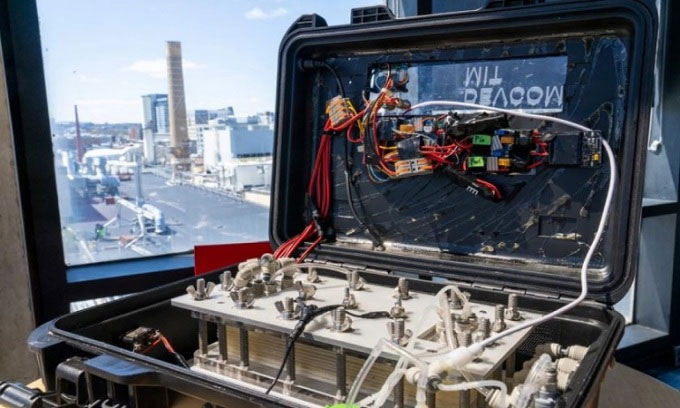A new device developed by Professor Jongyoon Han and colleagues at the Massachusetts Institute of Technology (MIT) creates drinking water from seawater using only a small amount of electricity.
The current version of the device is roughly the size of a suitcase. It uses less electricity than a smartphone charger and can draw energy from a portable solar panel when a battery storage system is unavailable.

The seawater desalination device weighs less than 10 kg. (Photo: M. Scott Brauer/MIT).
Instead of using filters or distillation, the device employs a technology designed by MIT called Ion Concentration Polarization (ICP), which was first introduced 12 years ago. Researchers pump seawater through a narrow channel located between two charged membranes, one positively charged and the other negatively charged.
As the water flows through the electric field between the two membranes, particles such as salt molecules, viruses, and bacteria are pushed into a side water channel for disposal. At this point, the main water channel has been relatively cleaned and desalinated, but it may still contain some salt ions.
For this reason, the pre-filtered water continues to flow through an electrodialysis module. Here, any remaining salt will be removed. Although this step involves passing water through an ion-exchange membrane, it helps separate salt ions from the membrane for reuse. Ultimately, the water flows out from the device’s nozzle, meeting the World Health Organization’s drinking water standards.
The research team emphasizes that the system is slightly complex due to its multi-stage process. First, the water passes through a series of six ICP modules, then through three additional modules before reaching the electrodialysis module. The current version can produce 300 ml of drinking water per hour, consuming 20 watt-hours of electricity per liter. Han and his colleagues are working to enhance the device’s capacity. They published their research on April 14 in the journal Environmental Science and Technology.


















































